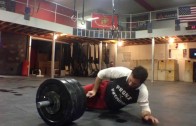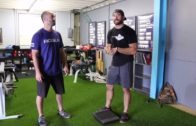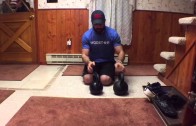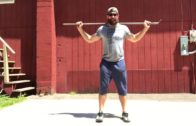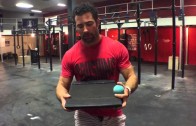WODdoc Episode 227 Project365: Finding Your VO2MAX
Today I was lucky enough to meet Chris from VO2TheMax. Chris is doing some really cool stuff. He is taking exercise to a more scientific level. You see, most of us just work out as hard as we can for as long as we can with no real light at the end of the tunnel. Turns out our body just may not respond the best to that scenario. When we think of it from load standpoint it seems very simple. You never max out day-in and day-out for months at a time (unless you read the book “squat every day”). Why? Because most of us don’t respond optimally to that stimulus. Turns out our aerobic system may not either.
***************************************UPDATED***************************************************************
Let’s start with some vocabulary:
What is VO2 Max? It is the maximum rate of oxygen a individual can consume during any particular exercise. (AKA maximal oxygen uptake, maximal oxygen consumption)
Why is VO2 Max important? The amount of oxygen an individual can consume is a direct reflection of their aerobic fitness.
Aerobic vs Anaerobic? Not to get off subject but it is import to make the distinction of aerobic and anaerobic activities. Aerobic activities are sub-maximal activities done over a prolonged period time where our body is using oxygen as the energy source. Anaerobic activities are max-effort activities, lasting brief amounts of time, where oxygen is not the primary energy source.
What is a VO2 max Test? A VO2 Max Test is a measurement that reflects a person’s ability to perform sustained exercise. It is generally considered the best indicator of cardiovascular fitness and aerobic endurance.
Why test VO2 max? Many people are inefficient exercisers, with no understanding of what specific heart rate, intensity or duration would best help them reach their specific goals. VO2 max testing can give athletes the tools to set realistic goals and assess improvement.
• • •
Don’t get confused with all this vocabulary … here is the take home points. We want establish intensity levels at which our bodies use these different sources of energy. These intensities are specific to the individual (perceived exertion). So it’s not a “one size fits all” type thing. We can then concoct a exercise plan. Retesting after a period of time will give us “objective” data to whether we are doing something correct or pissing in the wind. Make sense…?
Today’s WODdocket:
Read an article about VO2 Max
